Is Your Job Application Form Boring?
Is Your Job Application Form Boring?
Is Your Job Application Form Boring?
A long and boring job application will have more drop-offs than submissions. What’s the way to get more submissions and recruit quality talent?
A long and boring job application will have more drop-offs than submissions. What’s the way to get more submissions and recruit quality talent?
A long and boring job application will have more drop-offs than submissions. What’s the way to get more submissions and recruit quality talent?
Gathering details in a job application form is how you can gauge an applicant's skills. Hence, having a job application form template that covers the essential elements of an applicant’s professional experience is the step that has to be taken correctly. Let’s begin by defining it.
What Is a Job Application Form?
A job application form aims to show a questionnaire and collect personal information, work experience, education, and other relevant details that the job requires, like a letter of recommendation and so on. Quite often, an online job application form is present on a company website and job boards. They are spread through social media and at times, even online ads.
Key Sections of a Job Application Form
Personal Information: These are straightforward details like name, address, and contact details. Having a job application form that can autofill them is the way to speed up the data collection process.
Resume Upload: Not every online job application form needs a resume. Some can populate details from their LinkedIn accounts as well. Depending on which medium you use - resume or LinkedIn, extract details related to work experience, duration of work, skills acquired, and tools mastered.

Cover Letter (Optional): Many times, applicants are asked to upload their cover letter either as a file or copy-paste it into the text box. This is how you can see an applicant's relevance beyond their skills and expertise. A cover letter captures their motivation, and since it has a word limit, it also checks for their ability to articulate.
Education: Knowing the applicant’s academic qualifications is another way to understand their depth of knowledge. Based on the job requirements, it can also act as one of the filters if the applicant doesn’t have a degree in a certain domain or a specific type needed for the job role. Here, it might be useful to ask for extracurricular details since they help see how one applicant differs from others in terms of their leadership and openness to experience.
Additional Information: Asking an open-ended question could lead to the applicant opening up in a job application form about their specific accomplishments, job-related questions, and more.
Make a Seamless Online Job Application Form
There are numerous user-friendly form builder tools available that have a job application template available to use. But keep the following things in mind for a high-quality user experience while filling out a job application form:
Keep it concise and mobile-friendly: People's attention spans are quite short, and the risk of drop-offs is naturally high for HRs trying to recruit. Keep the job application brief by using auto-fill in different ways - saved data, resume, and LinkedIn data capture. Check for mobile friendliness and also for various browsers.

Clear instructions and error prevention: Guide applicants through the job application form with instructions and helpful hints for each section. Use validation to catch typos and missing information before they enter the data funnel, and then it is too late to take away insights.
Personalize the experience: Make the applicant feel valued. Use dynamic field names based on previous entries, and avoid generic greetings like "Dear Applicant." Nobody likes to hear such generic words. If an applicant is fresher, there’s no need to show them the work experience section. This also is an example of personalization beyond using an applicant's “name," which is often overdone nowadays.
Highlight the benefits: Briefly explain why your company culture is unique, what nonmonetary benefits are available, and how working here can add to an applicant’s career goals. This will keep them interested and lead to higher conversion rates.
Thank you, and next steps: Show appreciation for an applicant's time and effort in filling out the job application form. Briefly outline the next steps in the application process so they know what to expect in the coming days and weeks.
Job Application Form: A Quick Sum Up
A well-designed job application form is a useful tool for attracting top talent and simplifying your hiring process. Remember, it's your first impression as an employer, so make it count! Keep it user-friendly, informative, and optimized for maximum conversions. About 92% of people never reach the end of an online job application form.
But with the tips and strategies above, you can turn the job application form into a fun experience that makes applicants want to complete it and click the “submit” button.
Try WorkHack to build a job application form that captures the maximum data and has higher conversion rates than other forms.
Gathering details in a job application form is how you can gauge an applicant's skills. Hence, having a job application form template that covers the essential elements of an applicant’s professional experience is the step that has to be taken correctly. Let’s begin by defining it.
What Is a Job Application Form?
A job application form aims to show a questionnaire and collect personal information, work experience, education, and other relevant details that the job requires, like a letter of recommendation and so on. Quite often, an online job application form is present on a company website and job boards. They are spread through social media and at times, even online ads.
Key Sections of a Job Application Form
Personal Information: These are straightforward details like name, address, and contact details. Having a job application form that can autofill them is the way to speed up the data collection process.
Resume Upload: Not every online job application form needs a resume. Some can populate details from their LinkedIn accounts as well. Depending on which medium you use - resume or LinkedIn, extract details related to work experience, duration of work, skills acquired, and tools mastered.

Cover Letter (Optional): Many times, applicants are asked to upload their cover letter either as a file or copy-paste it into the text box. This is how you can see an applicant's relevance beyond their skills and expertise. A cover letter captures their motivation, and since it has a word limit, it also checks for their ability to articulate.
Education: Knowing the applicant’s academic qualifications is another way to understand their depth of knowledge. Based on the job requirements, it can also act as one of the filters if the applicant doesn’t have a degree in a certain domain or a specific type needed for the job role. Here, it might be useful to ask for extracurricular details since they help see how one applicant differs from others in terms of their leadership and openness to experience.
Additional Information: Asking an open-ended question could lead to the applicant opening up in a job application form about their specific accomplishments, job-related questions, and more.
Make a Seamless Online Job Application Form
There are numerous user-friendly form builder tools available that have a job application template available to use. But keep the following things in mind for a high-quality user experience while filling out a job application form:
Keep it concise and mobile-friendly: People's attention spans are quite short, and the risk of drop-offs is naturally high for HRs trying to recruit. Keep the job application brief by using auto-fill in different ways - saved data, resume, and LinkedIn data capture. Check for mobile friendliness and also for various browsers.

Clear instructions and error prevention: Guide applicants through the job application form with instructions and helpful hints for each section. Use validation to catch typos and missing information before they enter the data funnel, and then it is too late to take away insights.
Personalize the experience: Make the applicant feel valued. Use dynamic field names based on previous entries, and avoid generic greetings like "Dear Applicant." Nobody likes to hear such generic words. If an applicant is fresher, there’s no need to show them the work experience section. This also is an example of personalization beyond using an applicant's “name," which is often overdone nowadays.
Highlight the benefits: Briefly explain why your company culture is unique, what nonmonetary benefits are available, and how working here can add to an applicant’s career goals. This will keep them interested and lead to higher conversion rates.
Thank you, and next steps: Show appreciation for an applicant's time and effort in filling out the job application form. Briefly outline the next steps in the application process so they know what to expect in the coming days and weeks.
Job Application Form: A Quick Sum Up
A well-designed job application form is a useful tool for attracting top talent and simplifying your hiring process. Remember, it's your first impression as an employer, so make it count! Keep it user-friendly, informative, and optimized for maximum conversions. About 92% of people never reach the end of an online job application form.
But with the tips and strategies above, you can turn the job application form into a fun experience that makes applicants want to complete it and click the “submit” button.
Try WorkHack to build a job application form that captures the maximum data and has higher conversion rates than other forms.
Gathering details in a job application form is how you can gauge an applicant's skills. Hence, having a job application form template that covers the essential elements of an applicant’s professional experience is the step that has to be taken correctly. Let’s begin by defining it.
What Is a Job Application Form?
A job application form aims to show a questionnaire and collect personal information, work experience, education, and other relevant details that the job requires, like a letter of recommendation and so on. Quite often, an online job application form is present on a company website and job boards. They are spread through social media and at times, even online ads.
Key Sections of a Job Application Form
Personal Information: These are straightforward details like name, address, and contact details. Having a job application form that can autofill them is the way to speed up the data collection process.
Resume Upload: Not every online job application form needs a resume. Some can populate details from their LinkedIn accounts as well. Depending on which medium you use - resume or LinkedIn, extract details related to work experience, duration of work, skills acquired, and tools mastered.

Cover Letter (Optional): Many times, applicants are asked to upload their cover letter either as a file or copy-paste it into the text box. This is how you can see an applicant's relevance beyond their skills and expertise. A cover letter captures their motivation, and since it has a word limit, it also checks for their ability to articulate.
Education: Knowing the applicant’s academic qualifications is another way to understand their depth of knowledge. Based on the job requirements, it can also act as one of the filters if the applicant doesn’t have a degree in a certain domain or a specific type needed for the job role. Here, it might be useful to ask for extracurricular details since they help see how one applicant differs from others in terms of their leadership and openness to experience.
Additional Information: Asking an open-ended question could lead to the applicant opening up in a job application form about their specific accomplishments, job-related questions, and more.
Make a Seamless Online Job Application Form
There are numerous user-friendly form builder tools available that have a job application template available to use. But keep the following things in mind for a high-quality user experience while filling out a job application form:
Keep it concise and mobile-friendly: People's attention spans are quite short, and the risk of drop-offs is naturally high for HRs trying to recruit. Keep the job application brief by using auto-fill in different ways - saved data, resume, and LinkedIn data capture. Check for mobile friendliness and also for various browsers.

Clear instructions and error prevention: Guide applicants through the job application form with instructions and helpful hints for each section. Use validation to catch typos and missing information before they enter the data funnel, and then it is too late to take away insights.
Personalize the experience: Make the applicant feel valued. Use dynamic field names based on previous entries, and avoid generic greetings like "Dear Applicant." Nobody likes to hear such generic words. If an applicant is fresher, there’s no need to show them the work experience section. This also is an example of personalization beyond using an applicant's “name," which is often overdone nowadays.
Highlight the benefits: Briefly explain why your company culture is unique, what nonmonetary benefits are available, and how working here can add to an applicant’s career goals. This will keep them interested and lead to higher conversion rates.
Thank you, and next steps: Show appreciation for an applicant's time and effort in filling out the job application form. Briefly outline the next steps in the application process so they know what to expect in the coming days and weeks.
Job Application Form: A Quick Sum Up
A well-designed job application form is a useful tool for attracting top talent and simplifying your hiring process. Remember, it's your first impression as an employer, so make it count! Keep it user-friendly, informative, and optimized for maximum conversions. About 92% of people never reach the end of an online job application form.
But with the tips and strategies above, you can turn the job application form into a fun experience that makes applicants want to complete it and click the “submit” button.
Try WorkHack to build a job application form that captures the maximum data and has higher conversion rates than other forms.
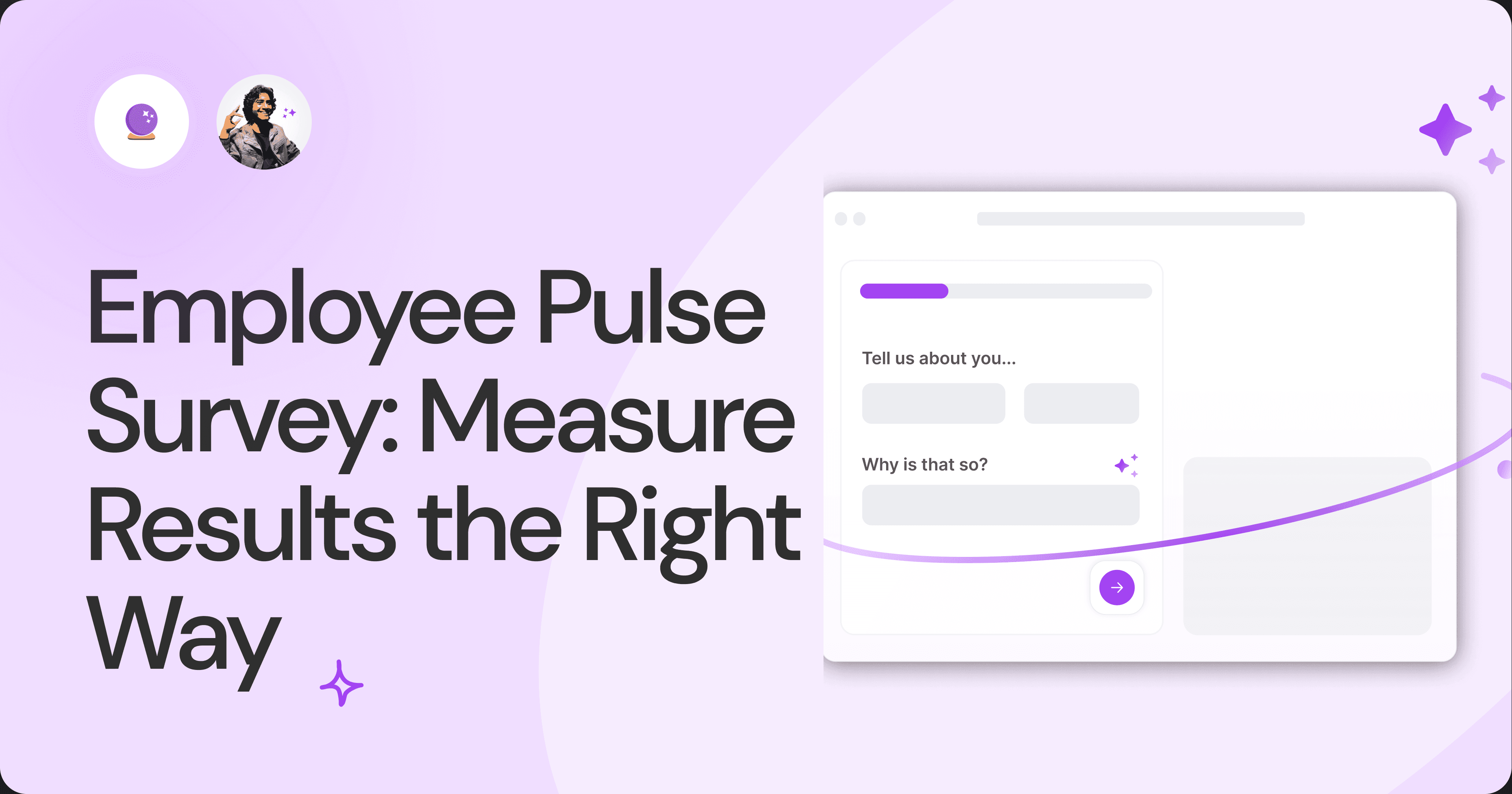
Employee Pulse Survey: Measuring Results the Right Way.
In an employee pulse survey, measuring results is how you take action and improve work culture, team dynamics, and employee satisfaction.
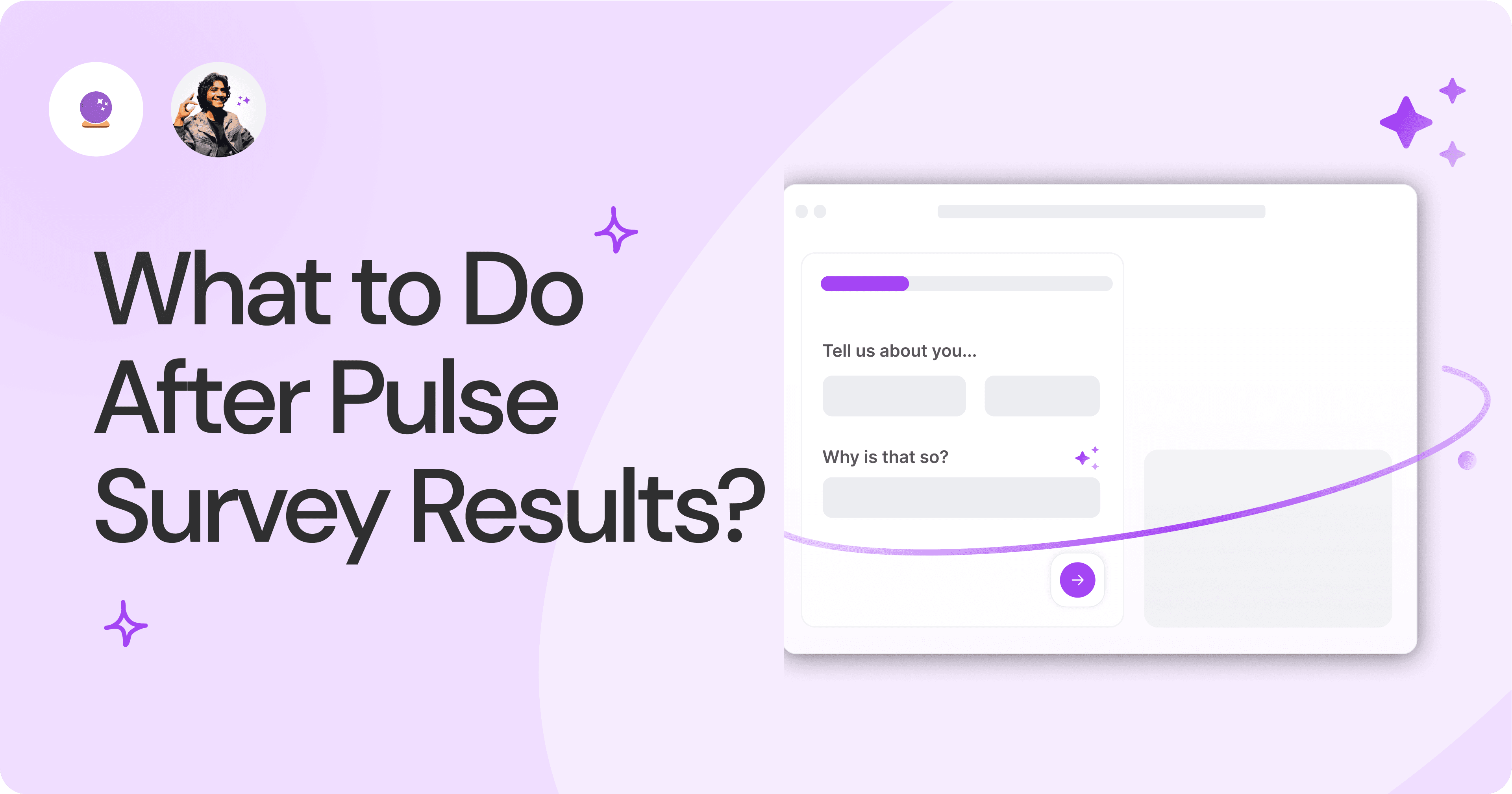
What to Do After Pulse Survey Results?
Pulse survey questions reveal insights that must be acted upon once measured. But what are these action steps for different types of results?
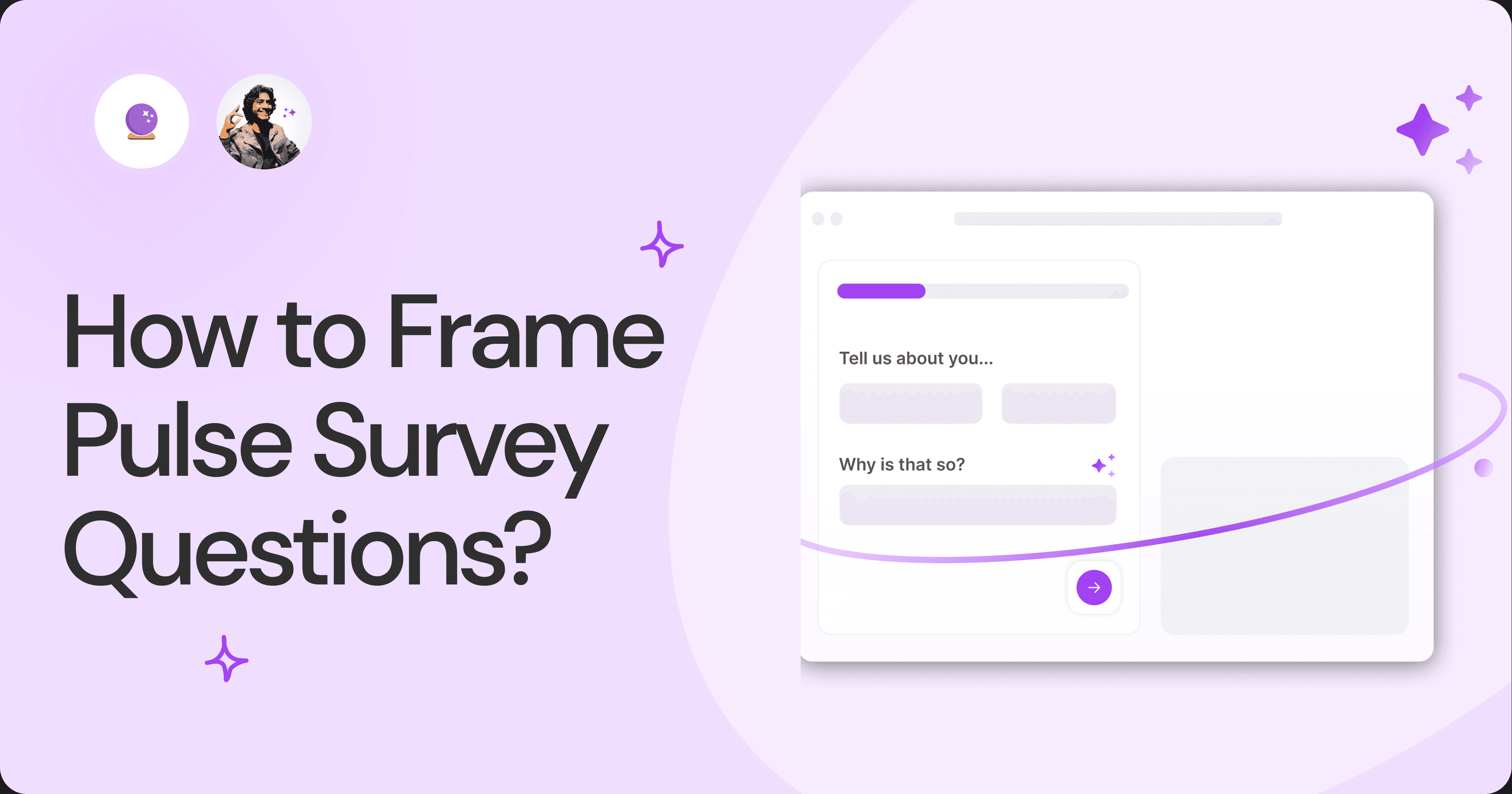
How to Frame Pulse Survey Questions?
Framing pulse survey questions for employees is an important step in any pulse survey to gather unbiased data. Only then can the right action steps be taken.
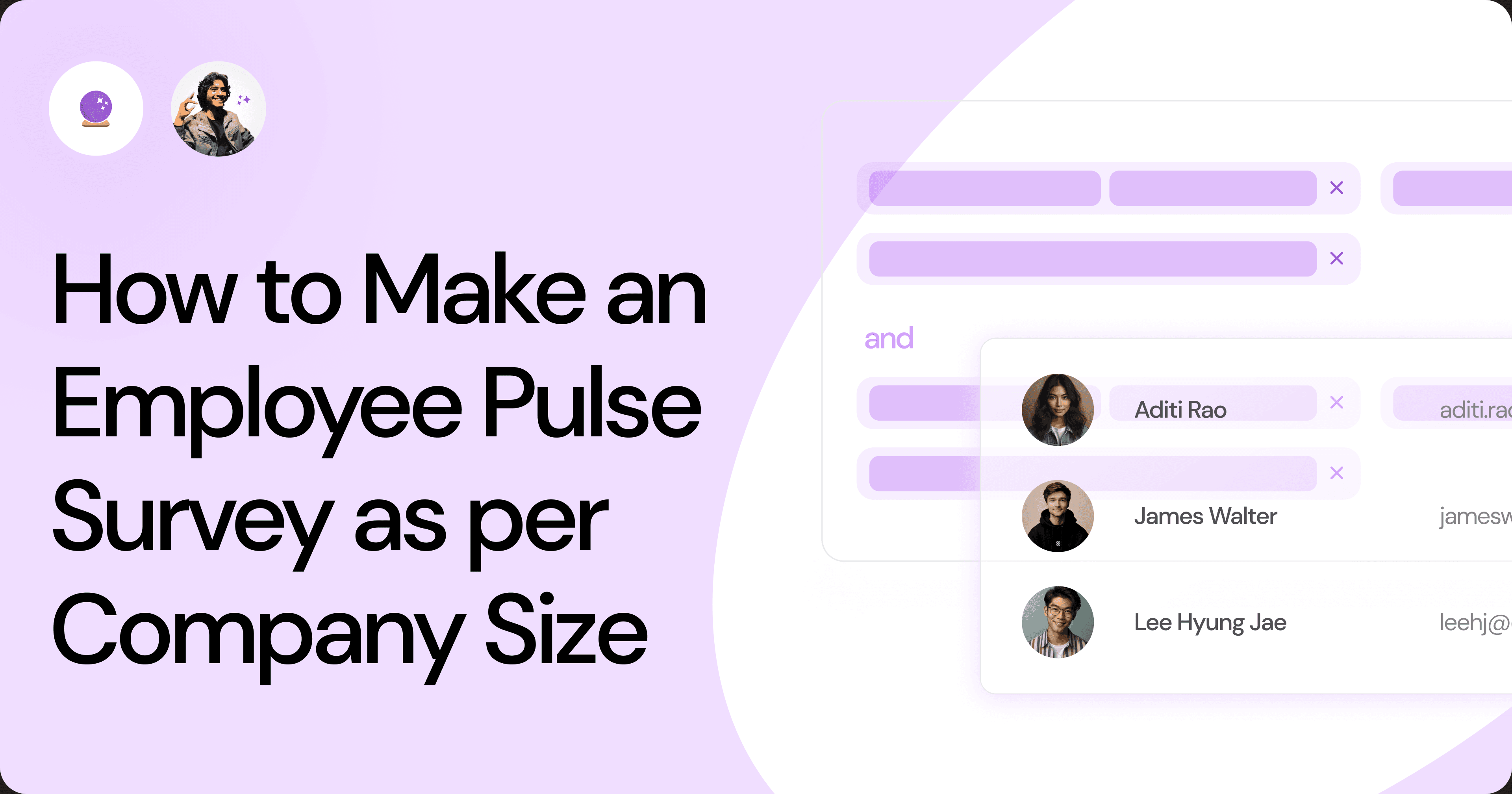
How to Make an Employee Pulse Survey as per Company Size?
Merely conducting an employee pulse survey is not the end. Different questions need to be asked for companies of different sizes.

Employee Pulse Surveys and Poor Completion Rates.
When employee pulse surveys are boring, nobody fills them out, and they fail to meet their goal. How can the completion rates be increased?
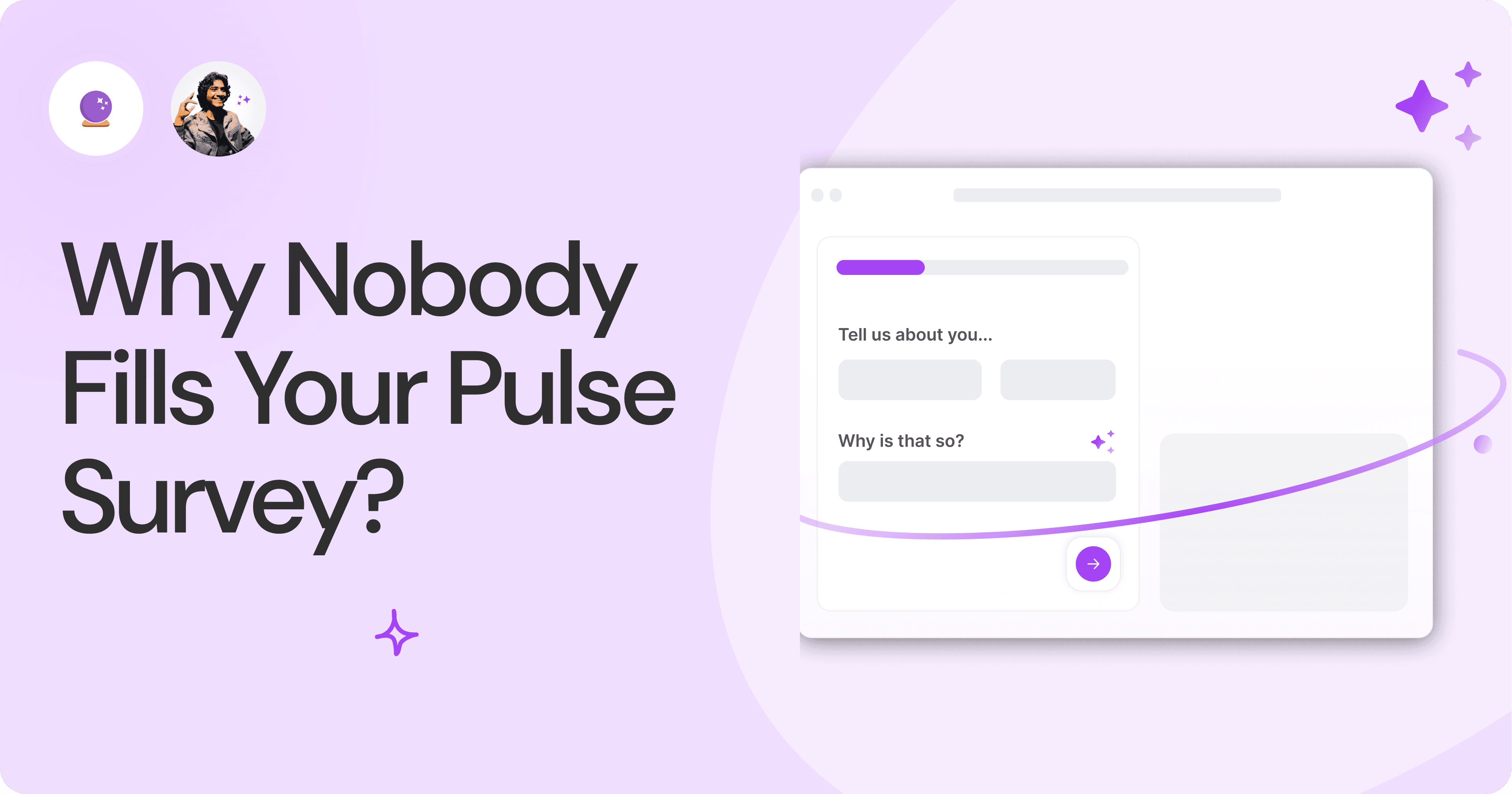
Why Nobody Fills Your Pulse Survey?
Nobody will fill out your pulse survey unless you have the right set of employee engagement pulse survey questions. So, how do we prevent drop-offs?
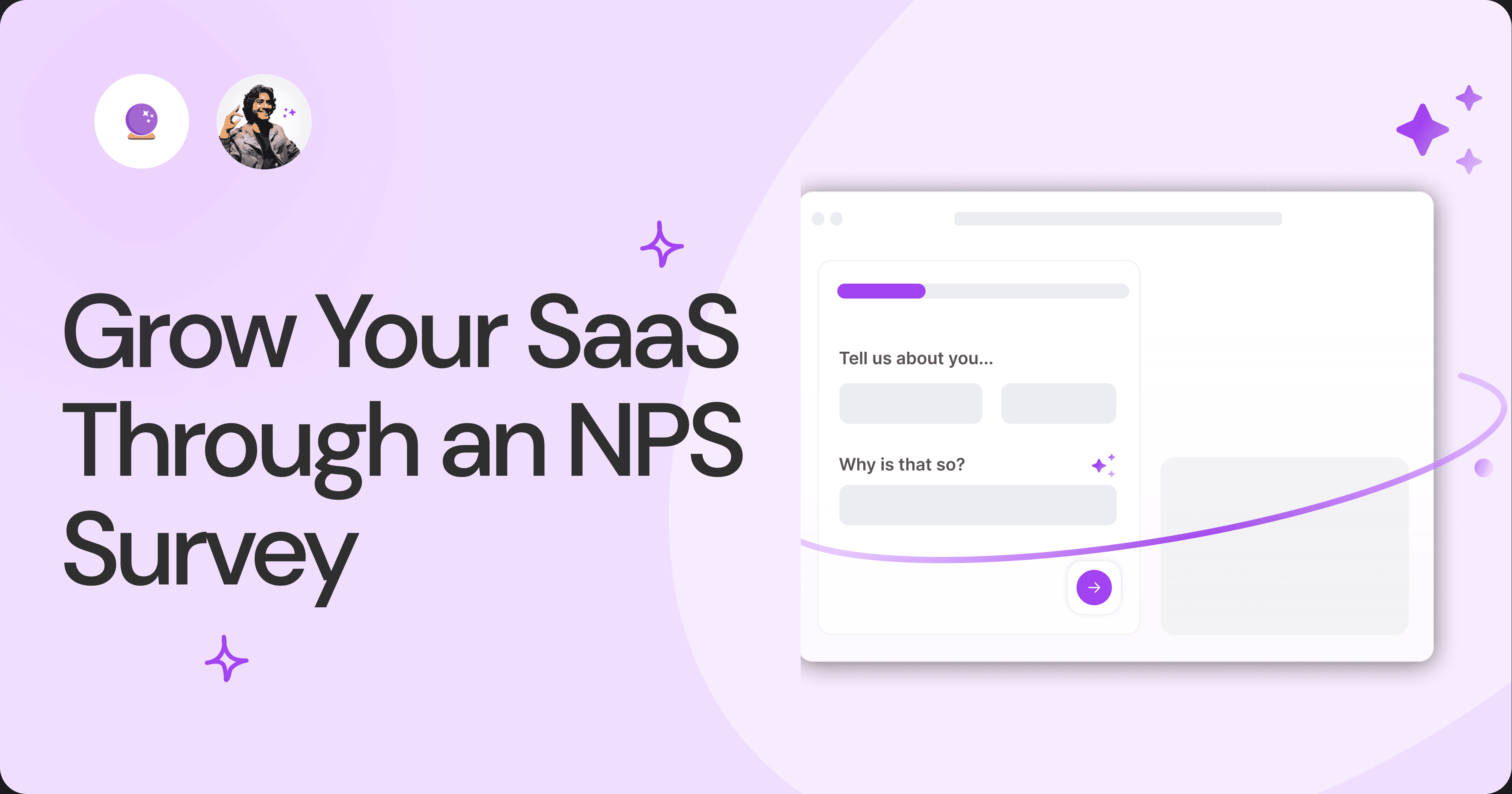
Grow Your SaaS Through an NPS Survey!
What if you could know which customers will be your advocates and which ones will prevent new entrants? The NPS survey will reveal this.
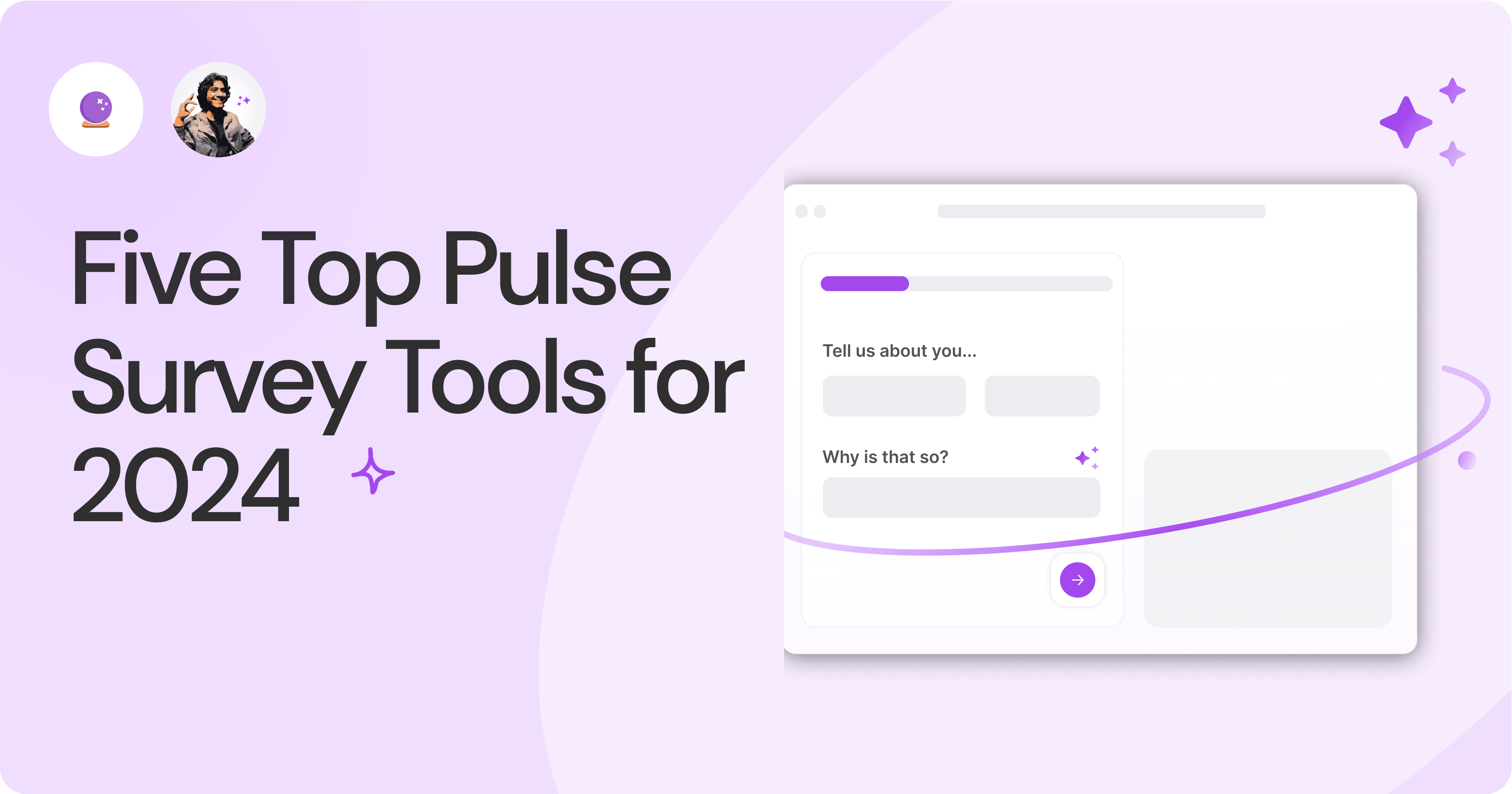
Five Top Pulse Survey Tools for 2024.
Which of all the employee pulse survey tools out there will best suit your pulse survey requirements? Unpacking in this blog.

Is Your Job Application Form Boring?
A long and boring job application will have more drop-offs than submissions. What’s the way to get more submissions and recruit quality talent?
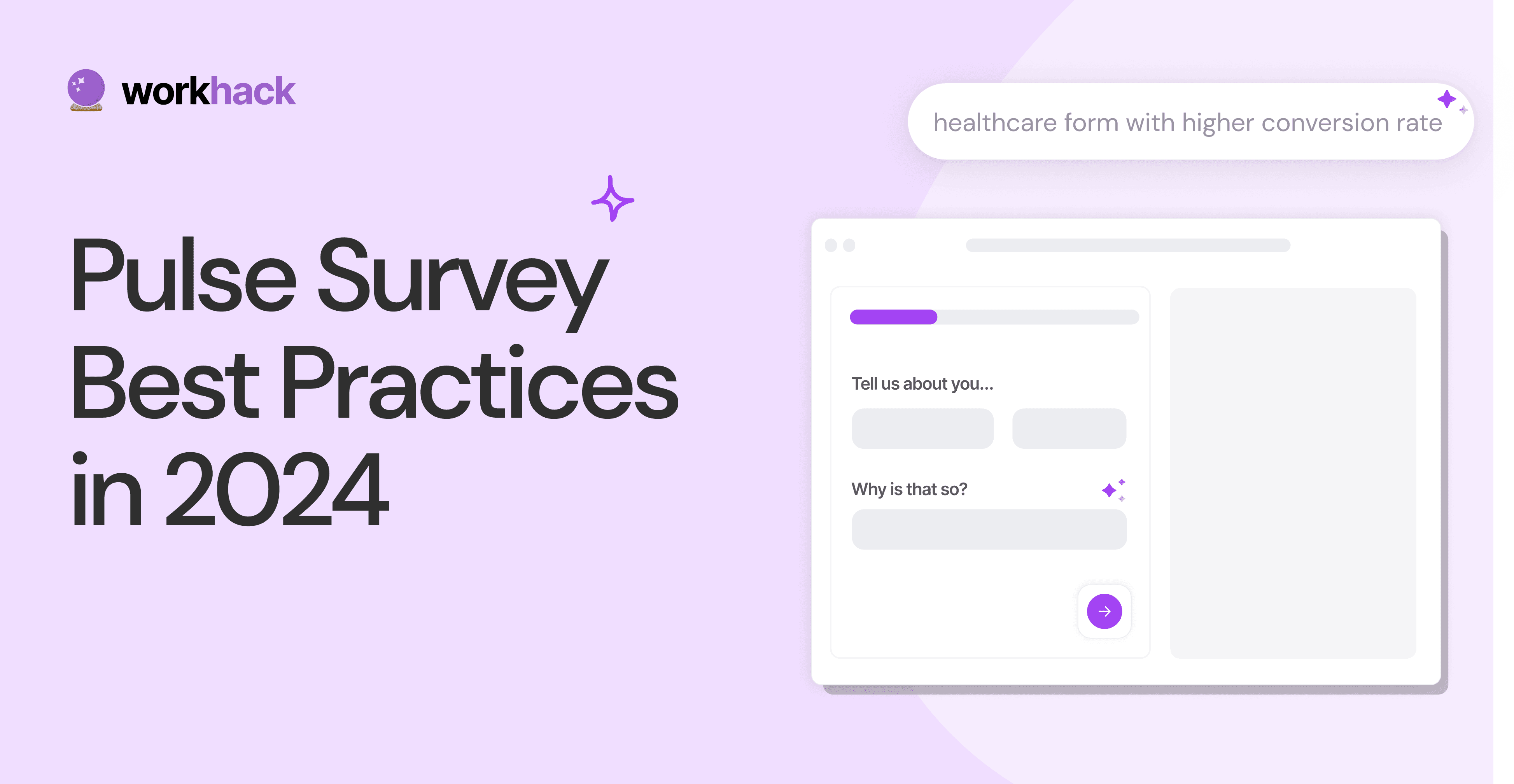
Pulse Survey Best Practices in 2024.
After narrowing on which pulse survey tool to use, the next step is to know the pulse survey best practices. We’ve listed the top ones for you.
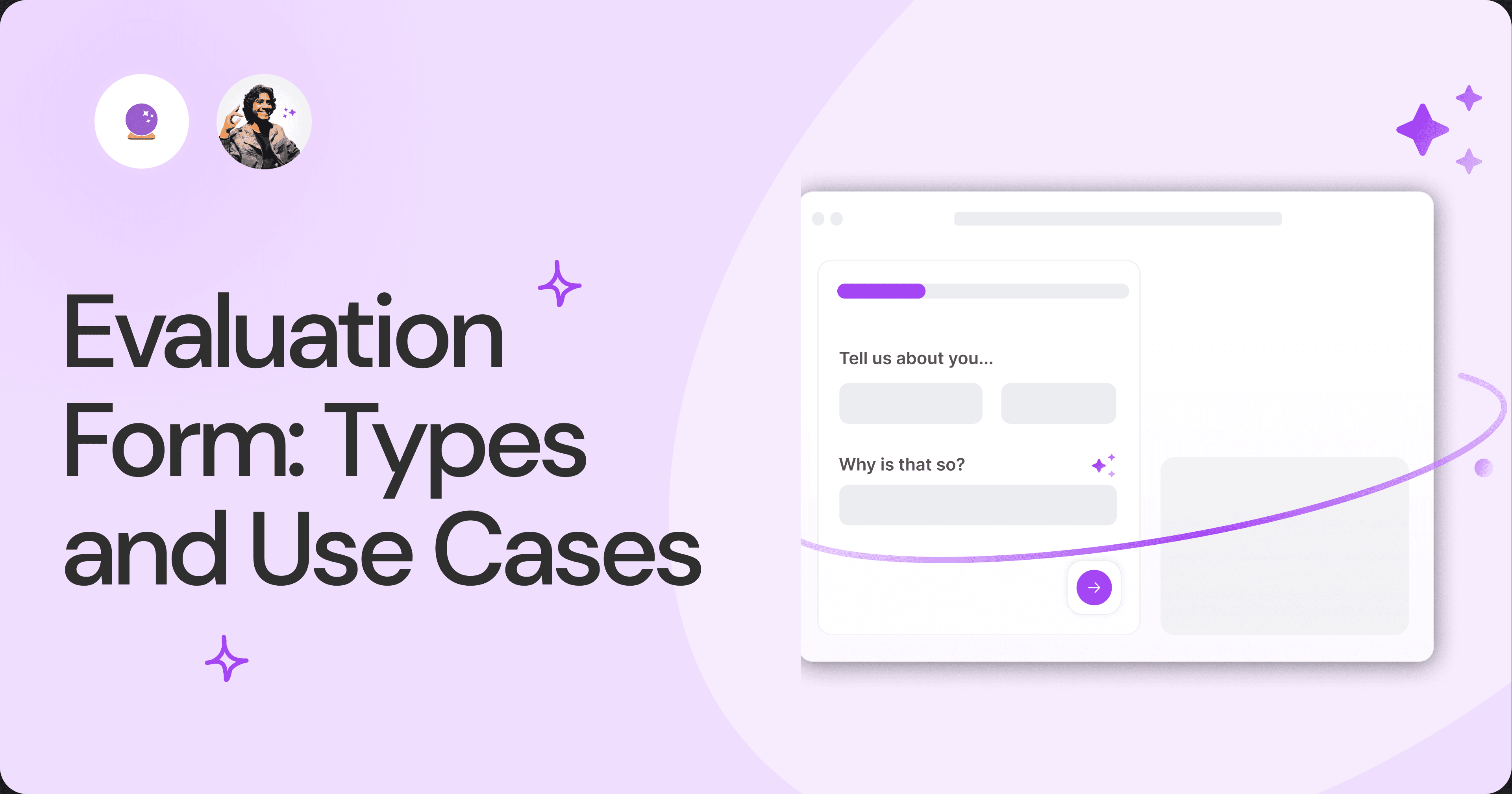
Evaluation Form: Types and Use Cases.
An evaluation form is a tool for checking employee growth, team morale, cross-team collaboration, and more. Do you know all its types?
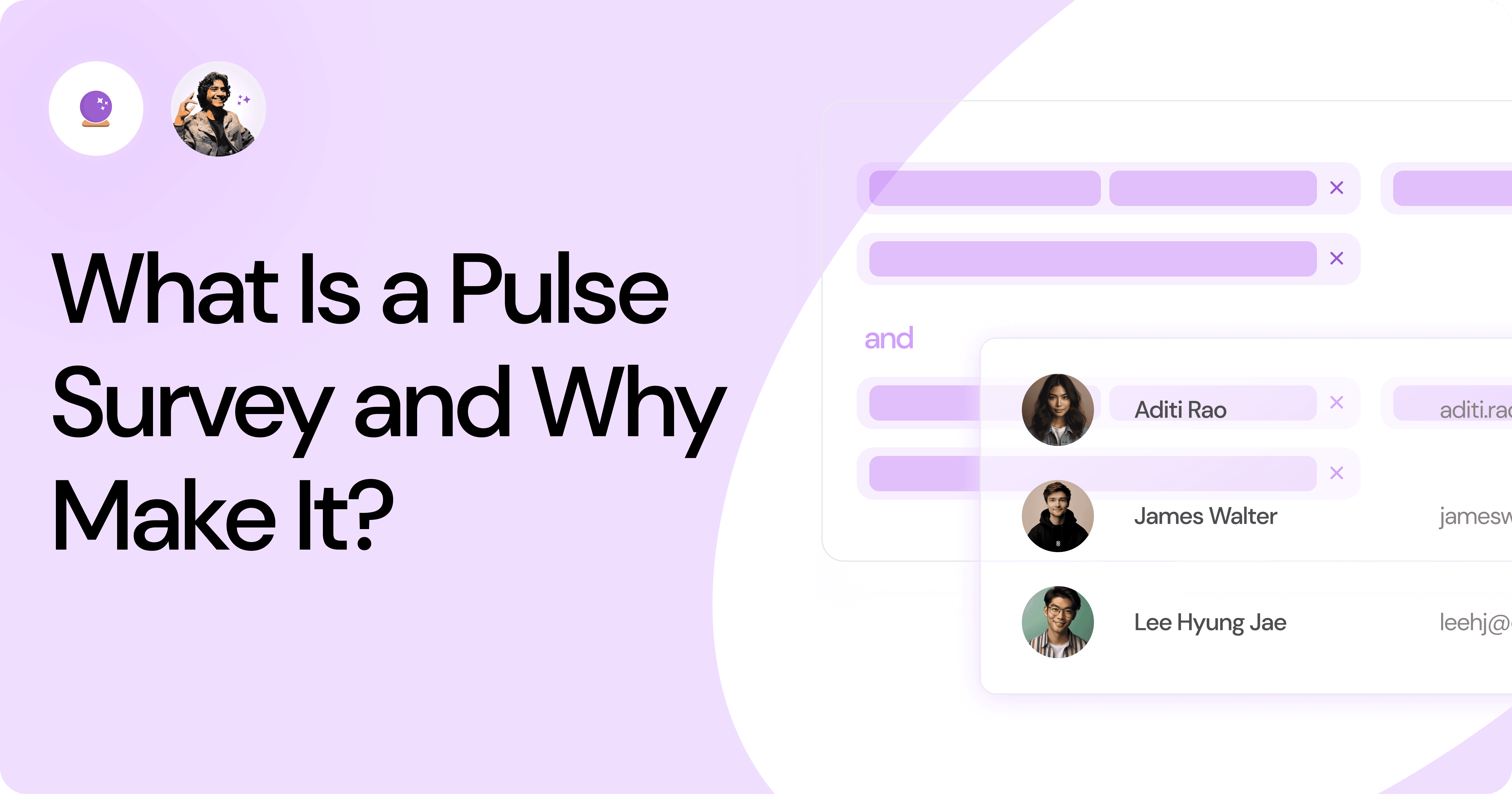
A Quick Guide to Pulse Surveys
Knowing what is a pulse survey isn’t enough. You must know what it aims to do, who makes it, and what you do with the insights. Let’s get started.

Employee Pulse Survey: Measuring Results the Right Way.
In an employee pulse survey, measuring results is how you take action and improve work culture, team dynamics, and employee satisfaction.

What to Do After Pulse Survey Results?
Pulse survey questions reveal insights that must be acted upon once measured. But what are these action steps for different types of results?

How to Frame Pulse Survey Questions?
Framing pulse survey questions for employees is an important step in any pulse survey to gather unbiased data. Only then can the right action steps be taken.

How to Make an Employee Pulse Survey as per Company Size?
Merely conducting an employee pulse survey is not the end. Different questions need to be asked for companies of different sizes.

Employee Pulse Surveys and Poor Completion Rates.
When employee pulse surveys are boring, nobody fills them out, and they fail to meet their goal. How can the completion rates be increased?

Why Nobody Fills Your Pulse Survey?
Nobody will fill out your pulse survey unless you have the right set of employee engagement pulse survey questions. So, how do we prevent drop-offs?

Grow Your SaaS Through an NPS Survey!
What if you could know which customers will be your advocates and which ones will prevent new entrants? The NPS survey will reveal this.

Five Top Pulse Survey Tools for 2024.
Which of all the employee pulse survey tools out there will best suit your pulse survey requirements? Unpacking in this blog.

Is Your Job Application Form Boring?
A long and boring job application will have more drop-offs than submissions. What’s the way to get more submissions and recruit quality talent?

Pulse Survey Best Practices in 2024.
After narrowing on which pulse survey tool to use, the next step is to know the pulse survey best practices. We’ve listed the top ones for you.

Evaluation Form: Types and Use Cases.
An evaluation form is a tool for checking employee growth, team morale, cross-team collaboration, and more. Do you know all its types?

A Quick Guide to Pulse Surveys
Knowing what is a pulse survey isn’t enough. You must know what it aims to do, who makes it, and what you do with the insights. Let’s get started.

Employee Pulse Survey: Measuring Results the Right Way.
In an employee pulse survey, measuring results is how you take action and improve work culture, team dynamics, and employee satisfaction.

What to Do After Pulse Survey Results?
Pulse survey questions reveal insights that must be acted upon once measured. But what are these action steps for different types of results?

How to Frame Pulse Survey Questions?
Framing pulse survey questions for employees is an important step in any pulse survey to gather unbiased data. Only then can the right action steps be taken.

How to Make an Employee Pulse Survey as per Company Size?
Merely conducting an employee pulse survey is not the end. Different questions need to be asked for companies of different sizes.

Employee Pulse Surveys and Poor Completion Rates.
When employee pulse surveys are boring, nobody fills them out, and they fail to meet their goal. How can the completion rates be increased?

Why Nobody Fills Your Pulse Survey?
Nobody will fill out your pulse survey unless you have the right set of employee engagement pulse survey questions. So, how do we prevent drop-offs?

Grow Your SaaS Through an NPS Survey!
What if you could know which customers will be your advocates and which ones will prevent new entrants? The NPS survey will reveal this.

Five Top Pulse Survey Tools for 2024.
Which of all the employee pulse survey tools out there will best suit your pulse survey requirements? Unpacking in this blog.

Is Your Job Application Form Boring?
A long and boring job application will have more drop-offs than submissions. What’s the way to get more submissions and recruit quality talent?

Pulse Survey Best Practices in 2024.
After narrowing on which pulse survey tool to use, the next step is to know the pulse survey best practices. We’ve listed the top ones for you.

Evaluation Form: Types and Use Cases.
An evaluation form is a tool for checking employee growth, team morale, cross-team collaboration, and more. Do you know all its types?

A Quick Guide to Pulse Surveys
Knowing what is a pulse survey isn’t enough. You must know what it aims to do, who makes it, and what you do with the insights. Let’s get started.

Nine Types of Healthcare and Medical Forms.
Medical forms are a must-have for any healthcare business or practitioner. Learn about the different kinds of medical and healthcare forms.

4 Tips for Better Medical History Forms.
Medical history forms are central to patient care, onboarding, and medical administration records. Learn how to make them easier to fill.

How to Build Mental Health Intake Forms?
Mental health intake forms are not like patient intake forms. Mental health intake forms deal with far more sensitive data and have specific design methods.

What, Why and How of Telemedicine Forms.
Telemedicine is on the rise and with different form builders out there, which one best suits your needs as a healthcare services provider?

3 Reasons for Major Drop-Offs in Medical Forms.
No matter which healthcare form we pick, there are major drop-off reasons. We shall dive into the top 3 and learn how to resolve them in your next form.

Patient Onboarding Forms - From Click to Clinic.
Patient onboarding forms are the first touchpoint for patients; getting this right for higher conversion rates is a must-have. Learn how to perfect them now.

5 Key Parts of a Good Patient Satisfaction Form.
The goal of patient satisfaction surveys is to course-correct the services of a healthcare provider. Patient feedback leads to a culture of patient-centric care.

Build Quick and Easy Medical Release Forms.
Every HIPAA-compliant healthcare provider comes across medical release forms that involve details from medical history forms. Can they be shipped fast? Yes.

Employee Pulse Survey: Measuring Results the Right Way.
In an employee pulse survey, measuring results is how you take action and improve work culture, team dynamics, and employee satisfaction.

What to Do After Pulse Survey Results?
Pulse survey questions reveal insights that must be acted upon once measured. But what are these action steps for different types of results?

How to Frame Pulse Survey Questions?
Framing pulse survey questions for employees is an important step in any pulse survey to gather unbiased data. Only then can the right action steps be taken.

How to Make an Employee Pulse Survey as per Company Size?
Merely conducting an employee pulse survey is not the end. Different questions need to be asked for companies of different sizes.

Employee Pulse Surveys and Poor Completion Rates.
When employee pulse surveys are boring, nobody fills them out, and they fail to meet their goal. How can the completion rates be increased?

Why Nobody Fills Your Pulse Survey?
Nobody will fill out your pulse survey unless you have the right set of employee engagement pulse survey questions. So, how do we prevent drop-offs?

Grow Your SaaS Through an NPS Survey!
What if you could know which customers will be your advocates and which ones will prevent new entrants? The NPS survey will reveal this.

Five Top Pulse Survey Tools for 2024.
Which of all the employee pulse survey tools out there will best suit your pulse survey requirements? Unpacking in this blog.

Is Your Job Application Form Boring?
A long and boring job application will have more drop-offs than submissions. What’s the way to get more submissions and recruit quality talent?

Pulse Survey Best Practices in 2024.
After narrowing on which pulse survey tool to use, the next step is to know the pulse survey best practices. We’ve listed the top ones for you.

Evaluation Form: Types and Use Cases.
An evaluation form is a tool for checking employee growth, team morale, cross-team collaboration, and more. Do you know all its types?

A Quick Guide to Pulse Surveys
Knowing what is a pulse survey isn’t enough. You must know what it aims to do, who makes it, and what you do with the insights. Let’s get started.
Subscribe to stay updated.
Subscribe to stay updated.
Subscribe to stay updated.
HC

HC

HC

HC

70+ people from across industries read our emails.
HC

HC

70+ people from across industries read our emails.
HC

HC

HC

70+ people from across industries read our emails.




Bangalore, India / San Francisco, US
WorkHack Inc. 2023
Bangalore, India
San Francisco, US
WorkHack Inc. 2023
WorkHack Inc. 2023
Bangalore, India / San Francisco, US
WorkHack Inc. 2023
Bangalore, India / San Francisco, US




